Comprehensive Veg Plant Spacing Guide
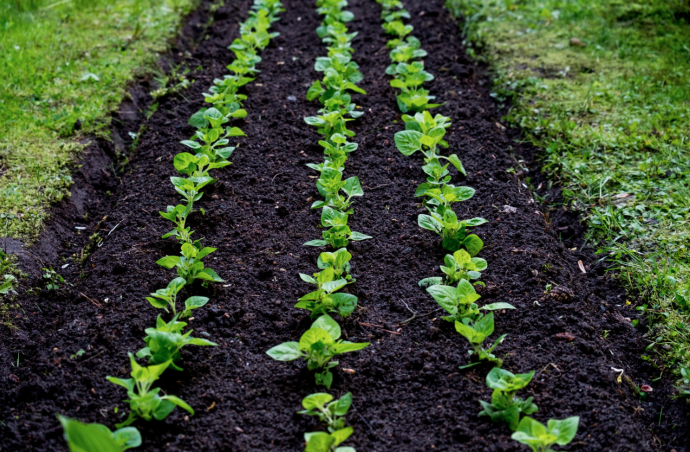
One of the most important things you must understand when planting a garden is that different vegetables require different amounts of room to grow. The possibilities are virtually endless as are the spacing calculations. Every variety you choose should not only be chosen for the end product (the veggies and fruits your family will eat and any flowers you have in mind), but also for their ability to fit into the space you have to work with. The space in which you plant out your crops has a direct effect on their size and quality. Space crops too closely, and yield is poor. If you set them too far apart, you’re wasting valuable plot space. But there’s more to it than that: light soils can’t support spacing as close as heavier ones due to their free drainage.
Root and bulb crops are very sensitive to spacing: for baby carrots thin to 1⁄2in apart, but for big main crop roots leave 3in between plants. If you fancy huge slicing onions, place sets 10in apart each way. Massive cauliflowers can be achieved at 3ft spacing, but mini-heads can be grown with 12in distances. So many kinds of vegetables need different spacing, and it can be difficult to remember how much space goes between each plant. Here is what I have learned about plant spacing, including a couple of plant spacing calculators which help do some work for you. In order to make growing a garden easier, I have put together a plant spacing chart to help you.
Why is plant spacing so important?
There are in fact several very good reasons why providing just the right amount of space between your garden plants is so important. The right plant spacing will:
Help to reduce competition for the sunlight that is vital to growth
Help to conserve water by keeping the soil around the plants shaded
Help to ensure each plant gets the maximum amount of available nutrients
Help to reduce the amount of space for weeds in your garden
While you can add more nutrients to the soil in your garden, it is much better for your plants if they don't have to struggle for those that are already there. It is much better for your plants if you leave the right amount of space between them.
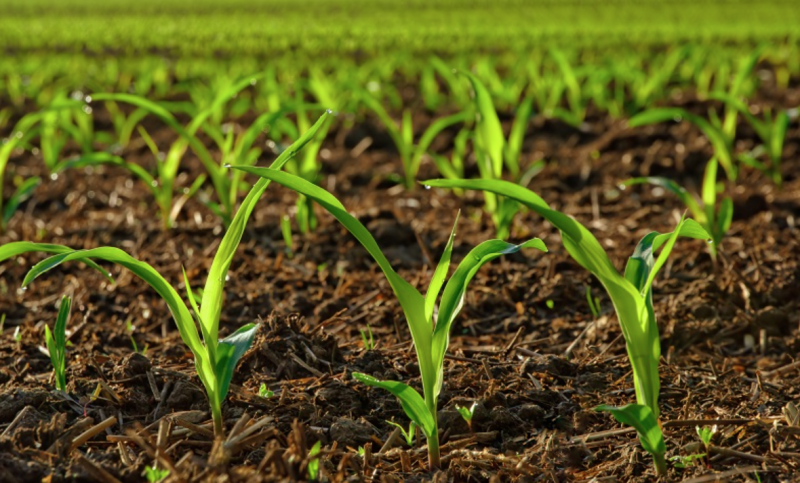
Row Spacing
The ideal spacing between the rows in your garden provides ample room for your plants to grow and for you to work in. In most cases it is a good idea to leave at least 18 to 36 inches of space between each row of plants. Large garden plants, such as cucumbers, melons and pumpkins, have sprawling growth habits that grow best with rows spaced 60 to 72 inches apart. Spacing your rows slightly farther apart than the minimum spacing for the plants you are using can provide you with a more comfortable working area, and the increased growing area for your plants encourages larger, healthier plants. Making breaks 2 feet long in the center of long rows provides easy access to the center of large gardens.
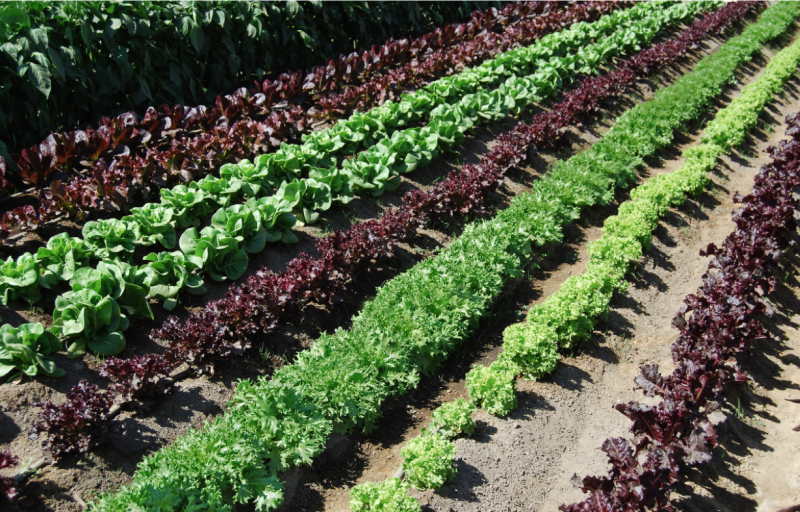
Garden Layouts
The most common garden layout is a series of parallel rows spaced at regular intervals that provide space for your plants to spread out and room to work in. Gardeners that want to get the most of a limited space can use a block layout. The block layout uses the same spacing between rows and plants to create a grid of plants. Although this type of row spacing allows you to plant more vegetables, the tighter spacing of your plants can make them more susceptible to drought and competition from weeds. This type of spacing is most effective in fertile soils with good drainage where competition from weeds is minimal.
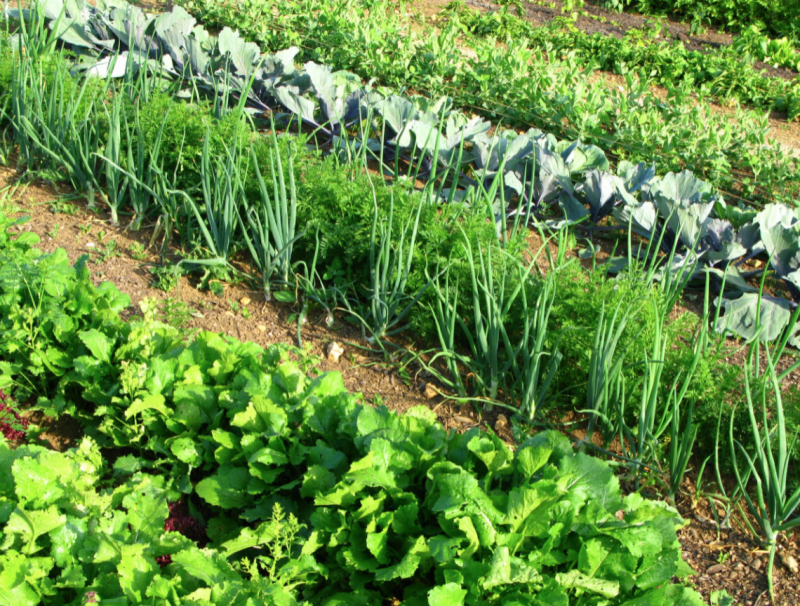
Large Plants
Plants with broad foliage or root systems, such as broccoli, cucumber and okra, need between 12 and 18 inches of space between each plant. Providing 15 to 18 inches of space between your asparagus, Brussels sprouts, cabbage, endive, cauliflower, corn and kale plants helps reduce competition and promotes healthy growth. Large plants that require significant amounts of water need even more room to grow. Providing a spacing of 18 to 24 inches for your eggplant, summer squash and tomatoes ensures that they can get the water they need. Winter squash, pumpkins and watermelons perform best when they are planted with a minimum spacing of 36 inches.
Small Plants
Smaller garden vegetable plants, such as beets, carrots, mustard plants, onions, pea plants and radishes, need approximately three to four inches of space between plants in a row. Slightly larger plants, including lima beans, bush beans, leeks, leaf lettuce, rutabaga, spinach and turnip plants, grow best with roughly four to six inches of space between the center of each plant. Pole beans need roughly six to 12 inches of spacing, and mustard, Swiss chard and kohlrabi perform best with a spacing of six to nine inches between plants. Heads of lettuce, potato plants and Chinese cabbage need approximately 10 to 12 inches of space between each plant.
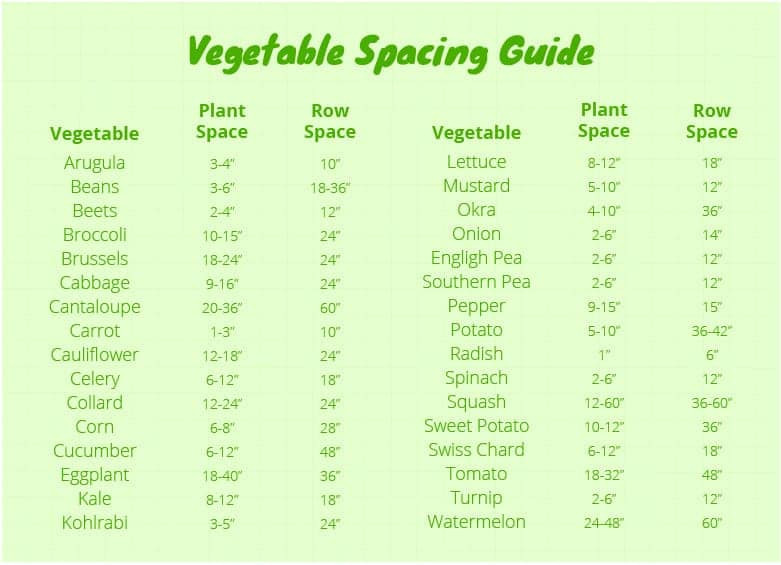
From all the things you can do to help ensure your garden produces a bountiful harvest, is to start it out right. This means making sure your soil is perfect, you have plenty of sun and shade, the right amount of water and all of your plants are properly spaced. While it might not be rocket science, there is, as I found out, a science to creating the perfect vegetable garden. I hope that all this information will help you to create the garden of your dreams.
